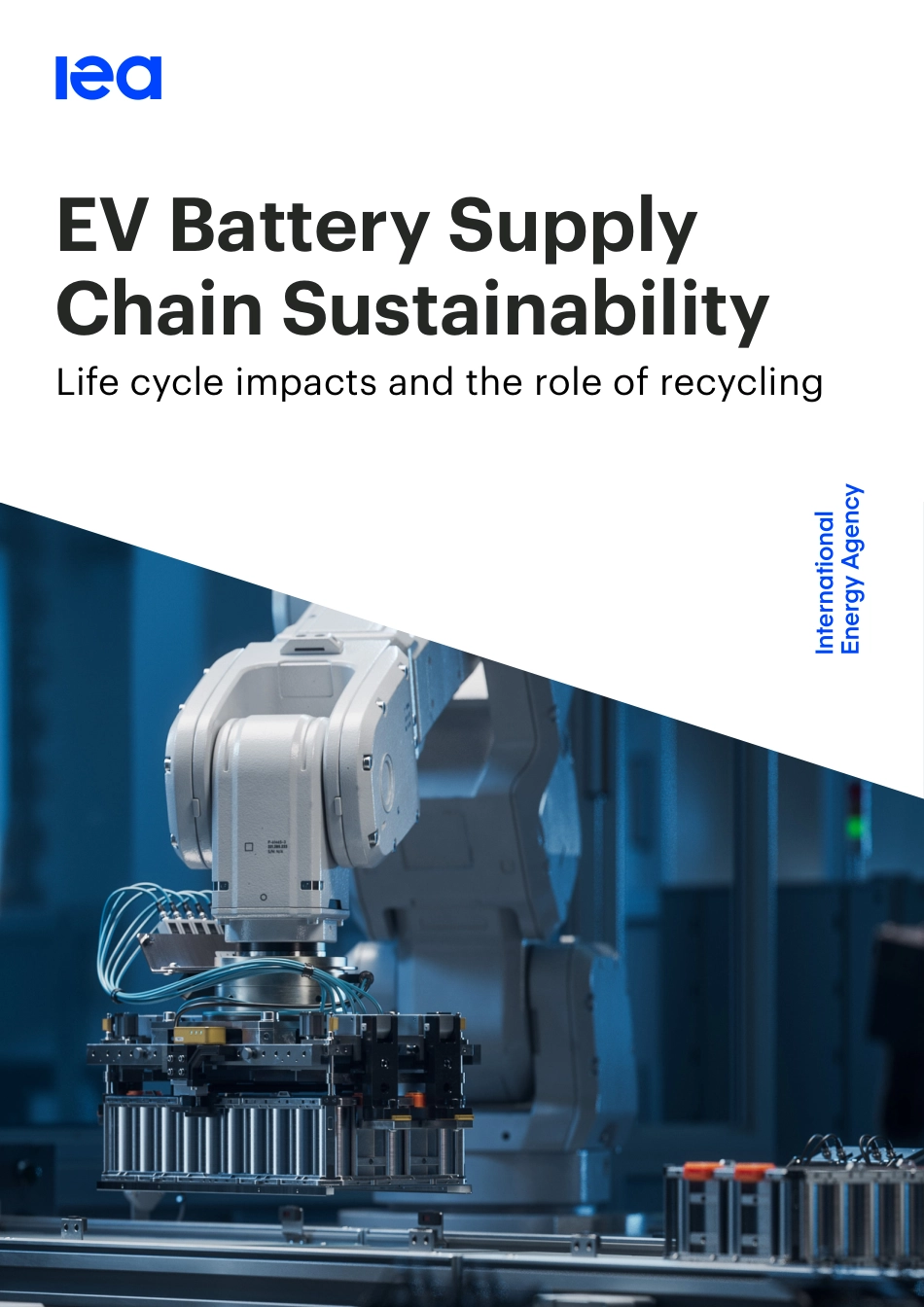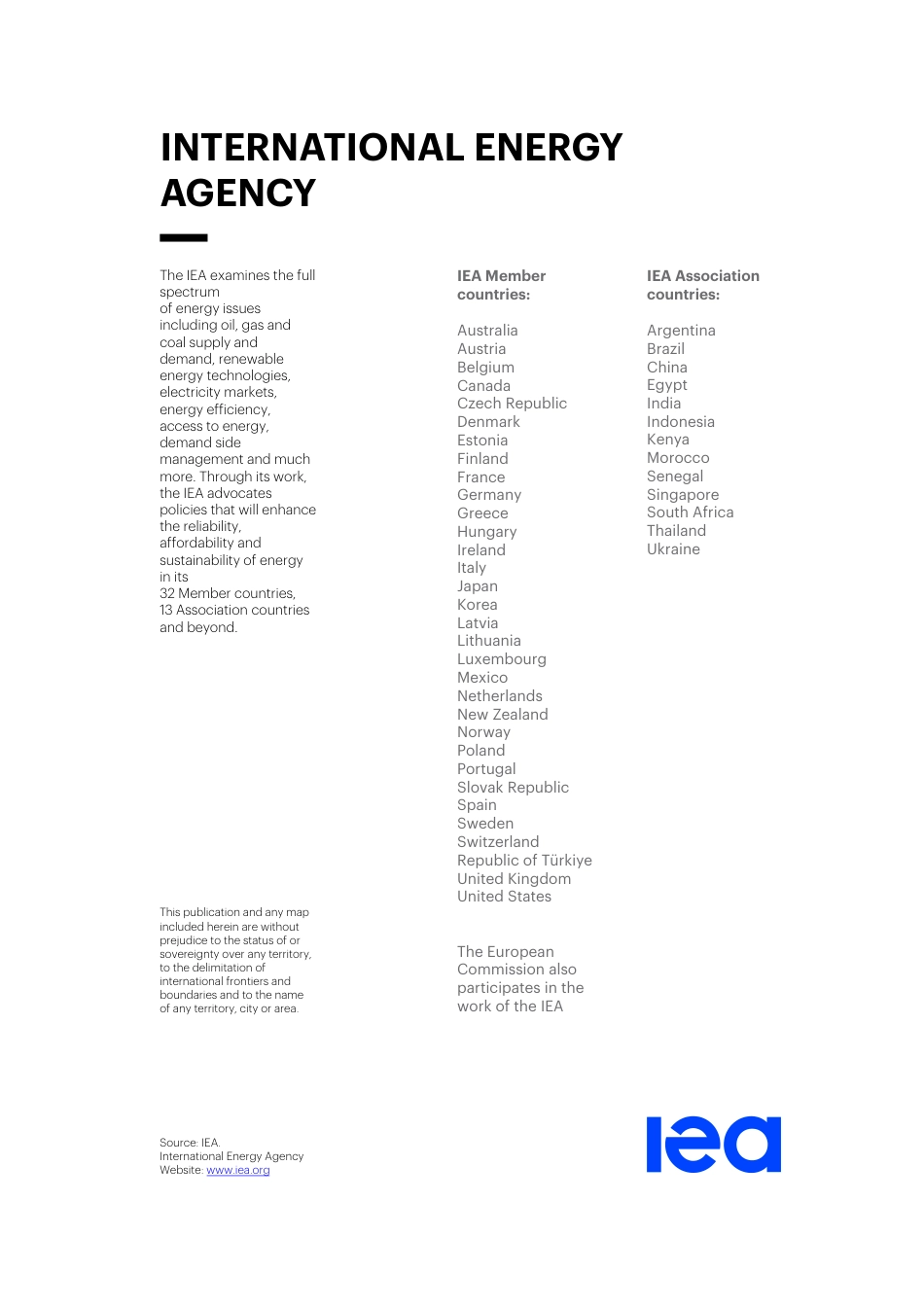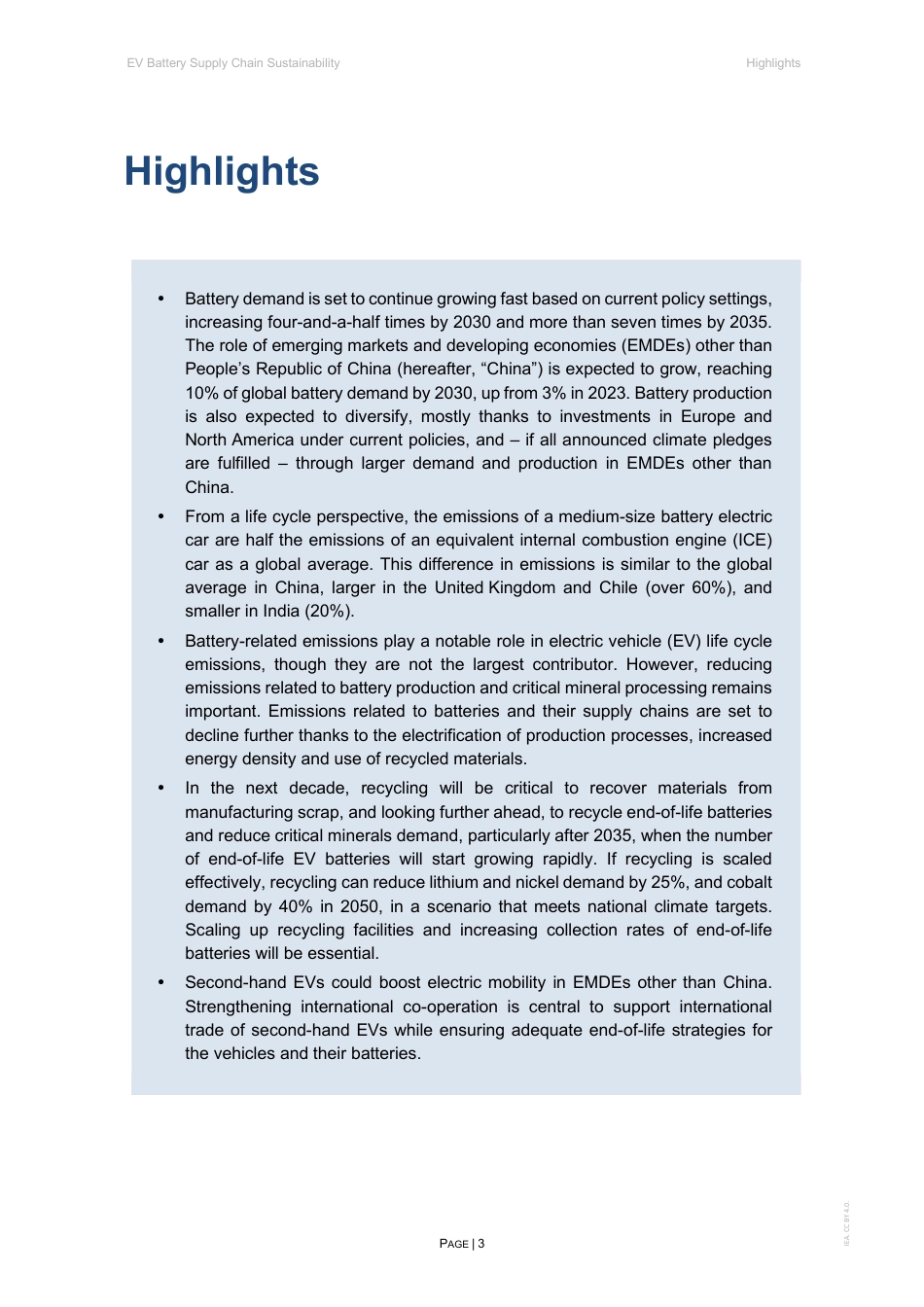EVBatterySupplyChainSustainabilityLifecycleimpactsandtheroleofrecyclingTheIEAexaminesthefullspectrumofenergyissuesincludingoil,gasandcoalsupplyanddemand,renewableenergytechnologies,electricitymarkets,energyefficiency,accesstoenergy,demandsidemanagementandmuchmore.Throughitswork,theIEAadvocatespoliciesthatwillenhancethereliability,affordabilityandsustainabilityofenergyinits32Membercountries,13Associationcountriesandbeyond.Thispublicationandanymapincludedhereinarewithoutprejudicetothestatusoforsovereigntyoveranyterritory,tothedelimitationofinternationalfrontiersandboundariesandtothenameofanyterritory,cityorarea.Source:IEA.InternationalEnergyAgencyWebsite:www.iea.orgIEAMembercountries:AustraliaAustriaBelgiumCanadaCzechRepublicDenmarkEstoniaFinlandFranceGermanyGreeceHungaryIrelandItalyJapanKoreaLatviaLithuaniaLuxembourgMexicoNetherlandsNewZealandNorwayPolandPortugalSlovakRepublicSpainSwedenSwitzerlandRepublicofTürkiyeUnitedKingdomUnitedStatesTheEuropeanCommissionalsoparticipatesintheworkoftheIEAIEAAssociationcountries:ArgentinaBrazilChinaEgyptIndiaIndonesiaKenyaMoroccoSenegalSingaporeSouthAfricaThailandUkraineINTERNATIONALENERGYAGENCYEVBatterySupplyChainSustainabilityHighlightsPAGE|3IEA.CCBY4.0.HighlightsBatterydemandissettocontinuegrowingfastbasedoncurrentpolicysettings,increasingfour-and-a-halftimesby2030andmorethanseventimesby2035.Theroleofemergingmarketsanddevelopingeconomies(EMDEs)otherthanPeople’sRepublicofChina(hereafter,“China”)isexpectedtogrow,reaching10%ofglobalbatterydemandby2030,upfrom3%in2023.Batteryproductionisalsoexpectedtodiversify,mostlythankstoinvestmentsinEuropeandNorthAmericaundercurrentpolicies,and–ifallannouncedclimatepledgesarefulfilled–throughlargerdemandandproductioninEMDEsotherthanChina.Fromalifecycleperspective,theemissionsofamedium-sizebatteryelectriccararehalftheemissionsofanequivalentinternalcombustionengine(ICE)carasaglobalaverage.ThisdifferenceinemissionsissimilartotheglobalaverageinChina,largerintheUnitedKingdomandChile(over60%),andsmallerinIndia(20%).Battery-relatedemissionsplayanotableroleinelectricvehicle(EV)lifecycleemissions,thoughtheyarenotthelargestcontributor.However,reducingemissionsrelatedtobatteryproductionandcriticalmineralprocessingremainsimportant.Emissionsrelatedtobatteriesandtheirsupplychainsaresettodeclinefurtherthankstotheelectrificationofproductionprocesses,increasedenergydensityanduseofrecycledmaterials.Inthenextdecade,recyclingwillbecriticaltorecovermaterialsfrommanufacturingscrap,andlookingfurtherahead,torecycleend-of-lifebatteriesandreducecriticalmineralsdemand,particularlyafter2035,whenthenumberofend-of-lifeEVbatterieswillstartgrowingrapidly.Ifrecyclingisscaledeffectively,recyclingcanreducelithiumandnickeldemandby25%,andcobaltdemandby40%in2050,inascenariothatmeetsnationalclimatetargets.Scalinguprecyclingfacilitiesandincreasingcollectionratesofend-of-lifebatterieswillbeessential.Second-handEVscouldboostelectricmobilityinEMDEsotherthanChina.Strengtheninginternationalco-operationiscentraltosupportinternationaltradeofsecond-handEVswhileensuringadequateend-of-lifestrategiesforthevehiclesandtheirbatteries.EVBatterySupplyChainSustainabilityAcknowledgementsPAGE|4IEA.CCBY4.0.AcknowledgementsEVBatterySupplyChainSustainabilitywaspreparedbytheEnergyTechnologyPolicy(ETP)DivisionoftheDirectorateofSustainability,Tech...



 VIP
VIP VIP
VIP VIP
VIP VIP
VIP VIP
VIP VIP
VIP VIP
VIP VIP
VIP VIP
VIP VIP
VIP